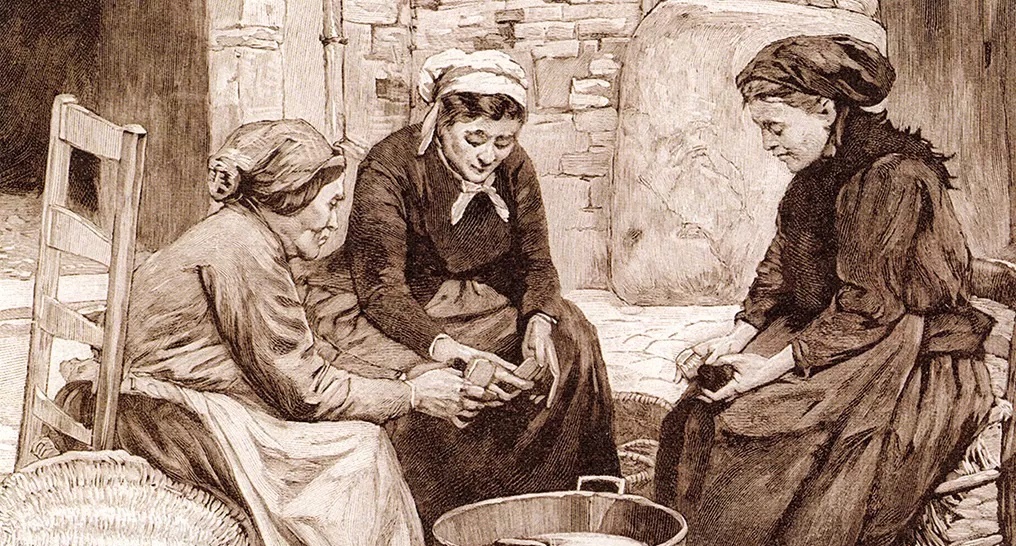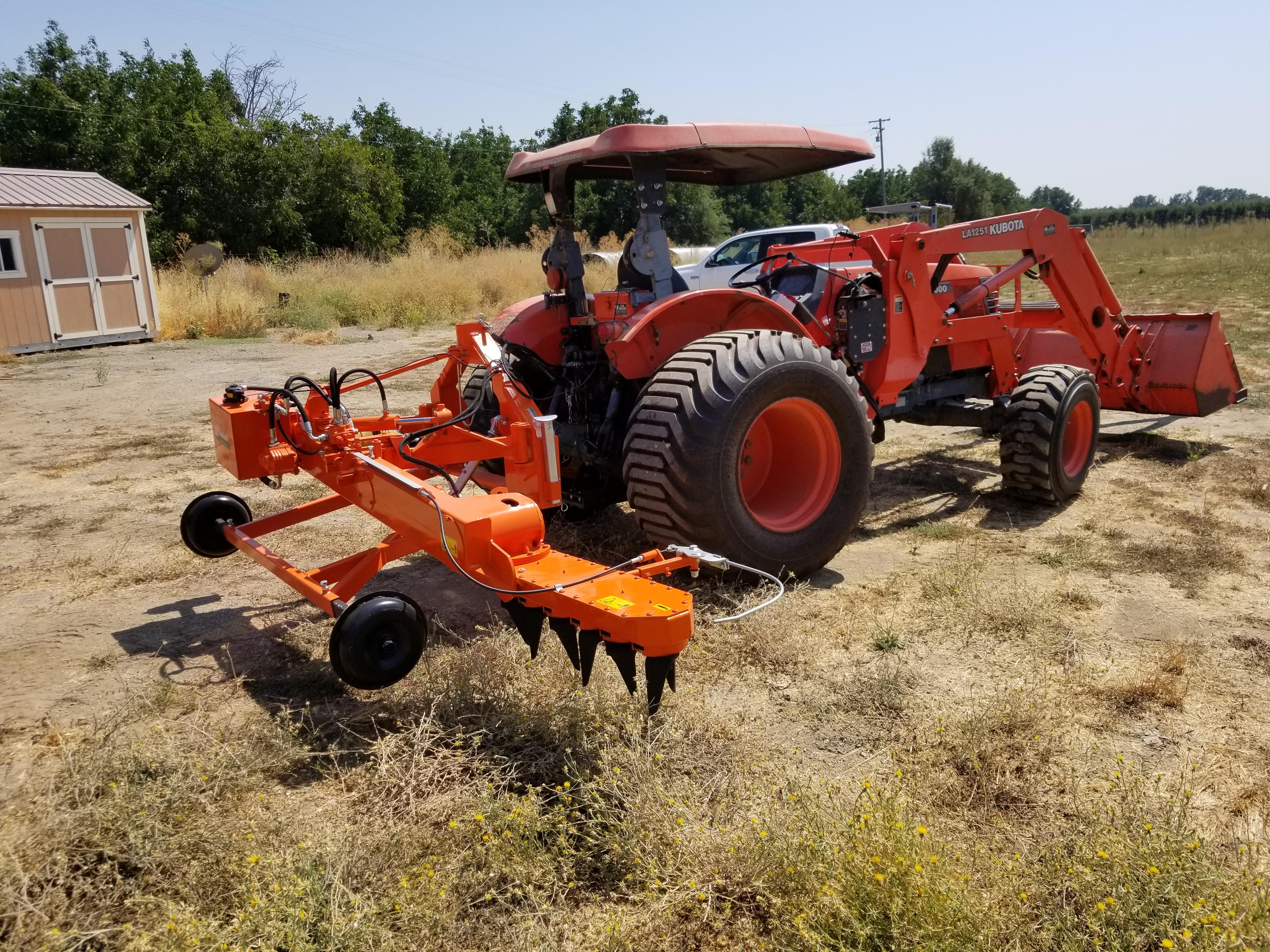
Tractor size
A few weeks ago a friend asked me this question: One major question I’m mulling over right now is whether to buy a large tractor for orchard maintenance, or whether […]
Forums › About Equipment › Equipment Q&A › Tractor size
- This topic has 1 reply, 2 voices, and was last updated 3 years ago by
Elise Baker.
-
AuthorPosts
-
-
September 10, 2020 at 12:18 pm #4091::
A few weeks ago a friend asked me this question:
One major question I’m mulling over right now is whether to buy a large tractor for orchard maintenance, or whether it makes more sense to continue to hire it out. I found a local guy who has the right kinds of equipment and is willing to work for hire. He’s clearing and prepping the land for me right now. It’s expensive, but it will take years to equal the cost to buy a tractor and pay someone to drive it. The question for you is how much tractor time is required in your orchard. That will help me to pencil-out this decision.
This is a very pertinent question and here was my (edited) answer. What do you think?
The tractor is a crucial tool for us, and for you it will quickly become a crucial tool as well as you have an orchard of quite a significant size (28 acres), however, you will probably end up using your tractor much more for things you are not planning on using it today. Let me qualify what I am saying.
We bought our used tractor on CraigsList, I can’t remember the number of hours it had on it. It is a 2005 Kubota 9000 Low profile (orchard model) with a loader. The first thing we did was to change the tire for a wide, low compaction models. Despite its relatively small size this tractor develops plenty of power (90HP) which gives us access to a large selection of implements. The advantage of this older model is that it is actually a little bit lighter than the new (equivalent) M5 or M6.

When we first bought the tractor (with no tractor experience whatsoever) we felt that we had purchased “too much of a tractor”. Our intention for the tractor was primarily to handle the mowing and the soil preparation. We were thinking that we did not need the loader and a smaller compact unit would have been sufficient. We were very concerned by the impact a bigger and heavier tractor would have on the soil compaction. We were wrong!
We use this tractor in the orchard quite frequently. We use it as initially planned for mowing, harrowing and plowing, but most importantly we use it all the time for unplanned tasks here and there. The bucket is a crucial tool for us. We transport dirt, move branches, unload heavy stuff from our truck, unload from the delivery truck, load the Trailer’s black water onto the back of the truck, unload the reserve diesel tank … you get the idea. We also use the tractor with a scraper box to fix potholes and rut in the avenues. It seems that we are slowly shifting away from using the tractor for only mowing (our initial principal intent) toward multiple and various tasks throughout the orchard.
A tractor is only as useful as the implements you are using:
For mowing we have a used 2016 10′ Vrisimo LP2120 Offset Flail Mower mounted with a Perruzzo Side Trimmer
For plowing we have a 8′ Schmeiser 8CP3 9 shank culti-plow paired with a Till an’ Pack clod crusher and a float
For harrowing we have a Rinieri EL225/100 in row cultivator (power harrow)
We use the mower about 10 times a year for a total of about 80 hours
We use the plow once a year for about 16 hours
We used the power harrow to prepare the tree planting beds (going around the sprinklers) for about 16 hours. We have not used it since then because of the mats are on the way and the trees are too small. We will be using it next year with the older trees, and anticipate to use it once for 8 hours, and the following years once a year for 24 hours. We were able to rent a similar power harrow the first year but they are difficult to come by, they are not common.
When we planted the trees the first year we used the tractor to pull a trailer with a side discharge to spread the gravel mulch. This was great! Unfortunately I could not get access to such a trailer the second year and that was painful to spread the gravel by hand (pointing at the unreliability of borrowed/rented equipment).
We used to mow the entire orchard with the tractor and flail mower. We had to go twice per row. Because of the mats we were left with a 3′ strip between the trees that was difficult to maintain despite the side mower attachment. We were cutting it every other month with a sickle mower attached to a walk- behind-tractor. It worked but it was slow and labor intensive. The total operation took about 40 hours to complete.
This year we have changed our mowing strategy and it works great. We bought a eXmark Lazer Z S 72″ zero turn mower. With this mower we now mow in the middle of the row with the tractor and the flail going fast and only once (about 7 hours for the entire orchard) per row and then we go with the zero turn mower zigzagging between the trees for another 10 hours. With this method we basically do the entire orchard much better, and much less tiring in only 17 hours.
If we were to change our setup we would consider using a 12′ flail mower (not offset), and a diesel 72″ zero turn mower (for easier fuel management). The other change to our setup would probably add a quick release system to our bucket. The loader bucket we have is permanently attached, and with a quick release it becomes effortless to switch between the bucket, a fork and other implements increasing the usefulness of the tractor. Today we are using some fork attachment on the bucket which are unstable, damages the bucket leading edge, and make it tough to handle as the bucket it blocking the view between the fork and the load.
We are not fully convinced with our plowing setup. We are trying to strike a balance between breaking compaction, keeping the ground cover while promoting biodiversity, and not getting the terrain too bumpy.
It is important to own your equipment, even if it is not necessarily cost effective in the short run. It is hard to rent/borrow earth engaging equipment. They tend to bend and get damaged. Often you need to “rent” the operator with the equipment, which can be very costly. Another consideration is the risk of importing spores and seeds from other locations. How could you reliably clean the machines, and would it be worth the time and energy to do it each time? It is invaluable to have the tractor sitting around, as you don’t have to plan around someone else’s schedule and thus reduce your risk to injure your back trying to handle something by hand because the tractor was not available.
All of this to say that a tractor is an important piece of equipment to have. Depending on neighbors’ with tractors and their goodwill, might be more cost effective in the short term but it is very unreliable. You will find that often you will need the tractor at the same time as they are busy taking care of their own farm.
Bigger is better, to a certain extent. You can limit soil compaction by making sure to not enter the orchard when the soil is moist and by using balloon tires. A bigger tractor will allow you to handle bigger implements which ultimately will save you time.
-
This topic was modified 3 years ago by
 Fabrice Caporal.
Fabrice Caporal.
-
This topic was modified 3 years ago by
-
September 14, 2020 at 10:33 am #4098
-
-
AuthorPosts
- You must be logged in to reply to this topic.